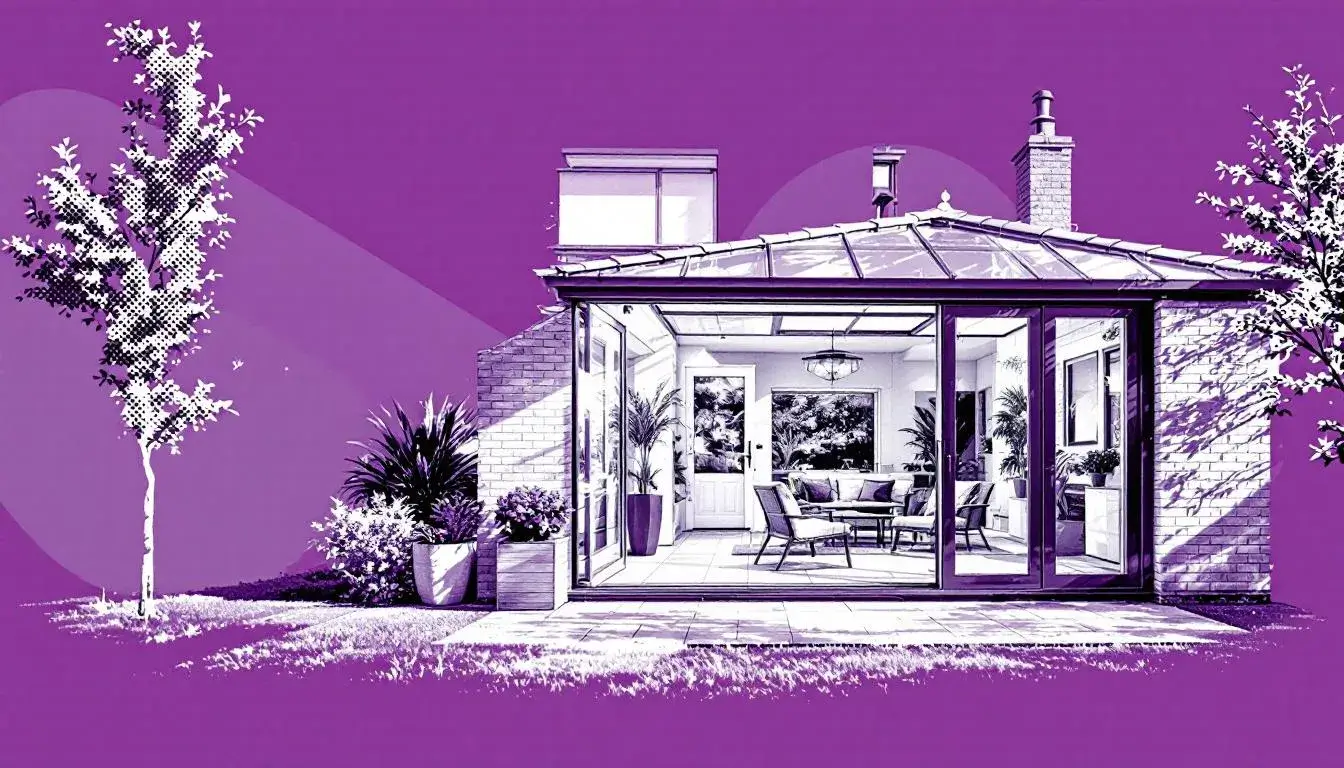
Finance for Kitchens

The real cost of a new kitchen in 2025
A well-planned kitchen upgrade can lift daily living and long-term value, but the sums matter. In the UK this year, a typical renovation sits between £12,500 and £30,000 for most homes, with a 3-bed house averaging around £17,500. Entry-level refreshes can come in under £7,000, while high-end projects with premium cabinetry, stone worktops, and integrated tech can exceed £55,000. Understanding where the money goes helps you protect your budget and your expectations.
Labour is a major driver. Kitchen fitting averages £250 to £350 per day or roughly £37 per hour. Installation costs range from about £2,200 for small kitchens to around £4,600 for larger layouts. These figures flex with the complexity of plumbing, electrical work, and structural changes. If you are opening walls or relocating services, allow a contingency of 10 to 15 percent to absorb surprises without stalling the project.
Appliances vary widely by brand and features. Fridge freezers typically run from £300 to £5,000+, ovens £239 to £5,000+, hobs £170 to £3,999, hoods £130 to £2,000+, microwaves £89 to £2,000+, and dishwashers £250 to £2,500+. The range is broad because specification choices are broad. Energy ratings, capacity, and smart features all nudge the price.
If your plans include more space, a modest kitchen extension of around 12m² for a 3-bed house averages roughly £19,500, commonly falling between £15,000 and £24,000. Material upgrades, skylights, bifolds, and structural steel can push that higher.
Why the urgency now? The UK home improvement market is growing, with kitchen projects a major contributor. The kitchen furniture sector is forecast to rebound with growth in 2025, driven by full refits and open-plan layouts. Yet household budgets are under pressure from energy and food price inflation, and spending on DIY has softened. Financing a kitchen is not just about access to credit - it is about choosing a repayment plan that fits your cash flow and protects your wider goals.
Understanding APR is not just about percentages - it is about knowing what you will pay in real terms over time.
Who benefits from this guide
If you are a UK homeowner or long-term renter with consent to renovate, planning a new kitchen in the next 12 months, this guide is for you. It brings together 2025 price ranges, typical labour rates, and the main ways to fund the project. Whether you are fitting a compact galley or opening up to create a family hub, the aim is straightforward - help you compare costs, anticipate risks, and select finance that is transparent and affordable. Kandoo is a UK-based retail finance broker, so we focus on practical routes that can be matched to your credit profile and your budget.
Ways to pay - from cash to credit
Savings and cash reserves
0 percent purchase credit card with promotional window
Personal loan via a broker like Kandoo
Home improvement loan from your bank
Secured homeowner loan against property
Overpayment pause and redraw on flexible mortgage
Buy-now-pay-later for specific appliances
Retailer finance on cabinetry or appliances
What it costs and what it means
| Item | Typical Cost Band | Impact on Budget | Potential Returns | Key Risks |
|---|---|---|---|---|
| Basic refresh - doors, paint, minor plumbing | Up to £7,000 | Low outlay, quicker turnaround | Improves look and saleability modestly | Scope creep, hidden wear under surfaces |
| Mid-range refit - new units, worktops, flooring | £12,500 - £30,000 | Most common spend for UK homes | Strong buyer appeal, better daily function | Delivery delays, installation overruns |
| Premium refit - bespoke cabinetry, stone, lighting | £30,000 - £55,000+ | High specification and custom features | Potential uplift in value in prime areas | Overcapitalising versus local ceiling prices |
| Fitting labour | £2,200 - £4,600+ | Predictable if scope is fixed | Quality finish reduces snags | Day-rate overruns if designs change |
| Appliance package | £1,200 - £10,000+ | Scales with brand and features | Energy savings, modern convenience | Supply issues, warranty limitations |
| 12m² extension | £15,000 - £24,000 | Major structural work and services | Space gain, lifestyle upgrade | Planning delays, structural surprises |
Who can qualify for kitchen finance
Most finance providers assess income stability, credit history, and affordability. A strong credit file can unlock lower APRs, while thin or impaired credit may still attract offers but at higher rates. Lenders will consider your debt-to-income ratio, any existing commitments, and whether the project adds durable value to the property. If you are financing appliances or cabinetry via a retailer, expect checks tied to the order value. For larger sums, secured homeowner loans may require sufficient equity and property valuation checks. Kandoo works as a broker rather than a lender, which means you can be matched with multiple panels of credit providers through a single application, helping you compare rates and terms without repeated hard searches. Always read the terms in full, confirm fees, and ensure the monthly repayment fits after stress-testing your budget for rate rises and seasonal bills.
From quote to completion - the simple sequence
Define scope and shortlist materials with priced alternatives
Get three like-for-like quotes with itemised labour
Build a 10 to 15 percent contingency buffer
Check eligibility and compare finance with Kandoo
Choose repayment term based on realistic monthly budget
Lock in quotes, delivery dates, and installation sequence
Track spend weekly and approve any variations in writing
Snag, test appliances, and file warranties and certificates
Upsides and trade-offs
| Consideration | Pros | Cons |
|---|---|---|
| Paying cash | No interest, faster decisions | Depletes emergency savings, opportunity cost |
| 0 percent credit card | Interest-free window, section 75 protection | High revert APR, credit limit may be low |
| Personal loan | Fixed rate and term, predictable payments | Early repayment fees possible, higher APR for weaker credit |
| Secured loan | Larger sums, potentially lower rate | Risk to property if you default |
| Retailer finance | Simple at checkout, promotions available | Tied to one supplier, limited flexibility |
| Mortgage redraw | Long term, potentially low rate | Interest paid over many years increases total cost |
What to check before you commit
Prices are only half the story. Ask for itemised quotes that separate cabinetry, worktops, appliances, and labour so you can substitute materials without derailing the plan. Confirm fitter day rates or fixed-price installation, and agree how variations will be costed. For appliances, balance upfront cost with energy ratings that can trim bills over time. If adding an extension, factor planning timescales, structural engineering, and service upgrades. On finance, compare APRs, total amount repayable, and any fees. Stress-test your budget for unexpected costs and delays. If market conditions tighten and household spending remains under pressure, you will want repayments that still feel comfortable. A calm, numbers-first approach makes for a smoother fit and a kitchen you will enjoy for years.
Alternative routes if plans change
Staged project - split refit into phases across two tax years
Refurbish doors and worktops - keep carcasses to reduce costs
Ex-display or graded appliances from reputable retailers
Hybrid DIY - self-manage demolition and painting, hire specialists
Marketplace resale of old appliances and units to offset costs
Your questions answered
Q: What is a sensible budget for a typical UK kitchen in 2025? A: Most fall between £12,500 and £30,000, with a 3-bed average around £17,500. Basic updates can be under £7,000, while premium schemes can exceed £55,000.
Q: How much should I allow for fitting? A: Installation averages £2,200 for small kitchens and around £4,600 for larger ones. Fitters typically charge £250 to £350 per day or roughly £37 per hour.
Q: Are appliance prices really that variable? A: Yes. Fridge freezers range from about £300 to over £5,000 and similar spreads apply to ovens, hobs, hoods, microwaves, and dishwashers. Features and brand drive the difference.
Q: Will an extension pay back on resale? A: Space tends to be valued by buyers, but returns depend on location, build quality, and ceiling prices. Prioritise functionality and finish to protect value.
Q: Is a secured loan safer because the rate is lower? A: Lower rates can mean lower monthly payments, but the loan is secured against your property. Missed payments could put your home at risk. Consider affordability first.
Q: Can Kandoo help if my credit is not perfect? A: As a broker, Kandoo can present options from multiple lenders. Approval and rates depend on your circumstances, but a single application can help you compare offers efficiently.
Ready to move forward
If you have your quotes and a clear budget, Kandoo can help you compare kitchen finance options side by side. Apply online, get a quick view of potential lenders, and choose the repayment plan that fits your monthly comfort zone. The goal is simple - the kitchen you want, with finance that works for real life.
Important information
Kandoo is a credit broker, not a lender. Finance is subject to status, terms, and affordability checks. Rates and eligibility vary by lender. Consider independent advice if you are unsure whether a particular finance product is right for you.
Buy now, pay monthly
Buy now, pay monthly
Some of our incredible partners
Our partners have consistently achieved outstanding results. The numbers speak volumes. Be one of them!


Naomi Waite Aesthetics

M&S Renewables










